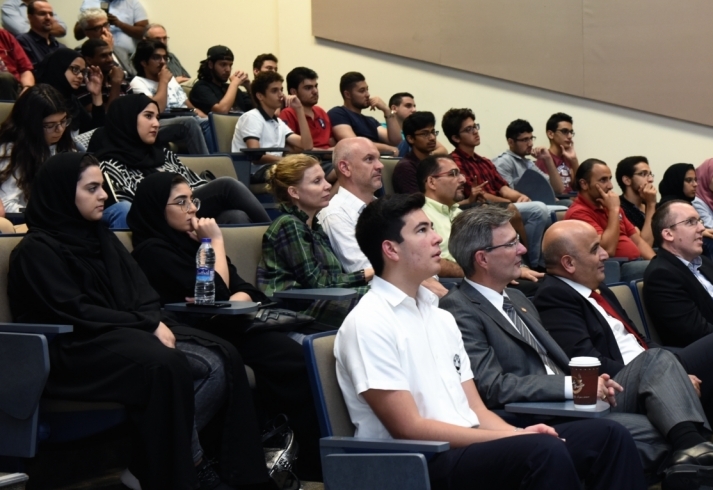
Mars has the conditions required to support life, says expert in a talk at AUS
Mars has the environmental conditions required to support life, said Dr. Bruce Jakosky, principal investigator of the Mars Atmosphere and Volatile Evolution (MAVEN) mission that focused on the possibility of life on Mars, in a special lecture held at American University of Sharjah (AUS) recently.
Held as part of the College of Arts and Sciences (CAS) Dean’s Lecture Series and as part of the World Space Week, the lecture of Dr. Jakosky also hailed the UAE efforts in exploring Mars and launching the first Arab mission to Mars. The UAE Mars mission will enrich Emirati capabilities as well as increasing human knowledge about space exploration and distant planets.
Dr. Jakosky provided the audience with evidence for the existence of environmental conditions required to support life on Mars. He also highlighted the similarities between Mars and Earth. These conditions required to support life in Mars—combined with the relative ease of exploring Mars, due to its proximity to Earth—set the planet apart from all other planets in our solar system or beyond, Dr. Jakosky explained.
Dr. Jakosky elaborated on each characteristic that could support life on Mars. He shared images of the planet that indicate the presence of dark gullies called recurring slope lineae (RSL) that appear during the Martian summer, indicated as evidence of liquid water on Mars.
Additionally, he used the example of a meteorite found on Earth that is believed to have come from Mars. “Having rocks must mean they came from a biologically active planet; the oxygen composition rules out the Earth and the moon as a source. That means Mars and Venus are most likely places they could come from, and it is much easier for rocks to come from Mars. These rocks have the components of a chemical composition that matches the environment on Mars,” said Dr. Jakosky.
The multinational Mars exploration program is geared towards understanding the "habitability" of Mars by microbes, the history of the habitability (and of liquid water), and whether life actually could exist on Mars today or did exist in the past.
Dr. Jakosky also explained that the discovery of life on Mars would have real significance for our understanding of life in general. In addition, by looking at the evolution of planets such as Earth, Mars and Venus, we can learn about the likely distribution of habitable planets around other stars.
Dr. Bruce Jakosky is a Professor in the Laboratory for Atmospheric and Space Physics (LASP) and the Department of Geological Sciences at the University of Colorado in Boulder, and is Associate Director for Science at LASP. His research interests are in the geology of planetary surfaces, the evolution of the Martian atmosphere and climate, the potential for life on Mars and elsewhere, and the philosophical and societal issues in astrobiology.
Present at the lecture were Dr. Mahmoud Anabtawi, Dean of CAS; faculty members; students; and other members of the AUS community.


























